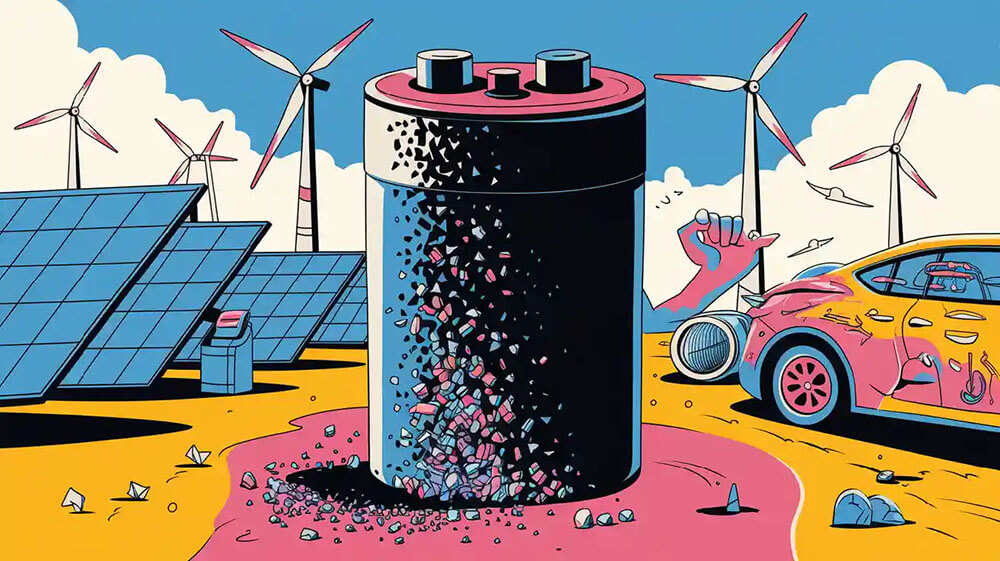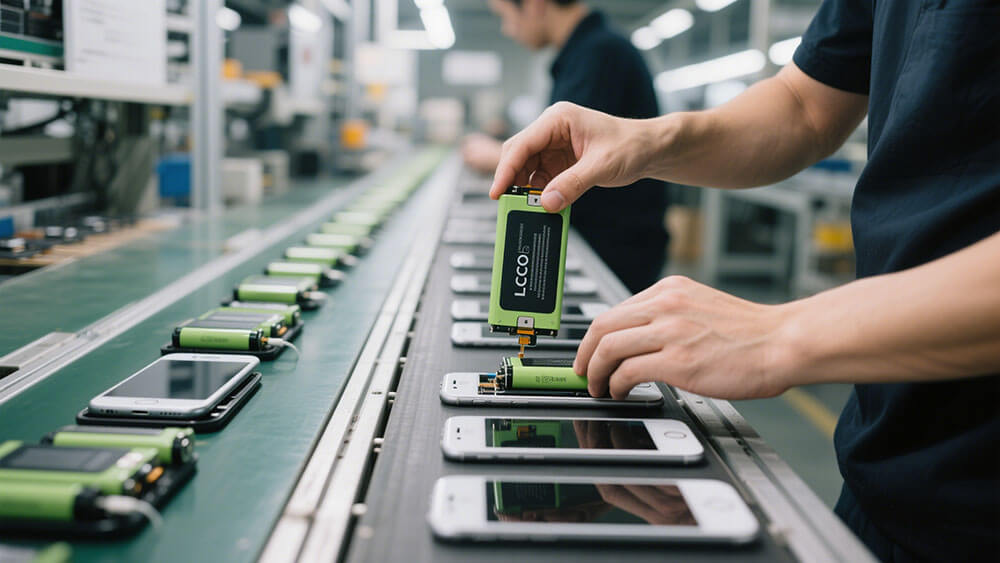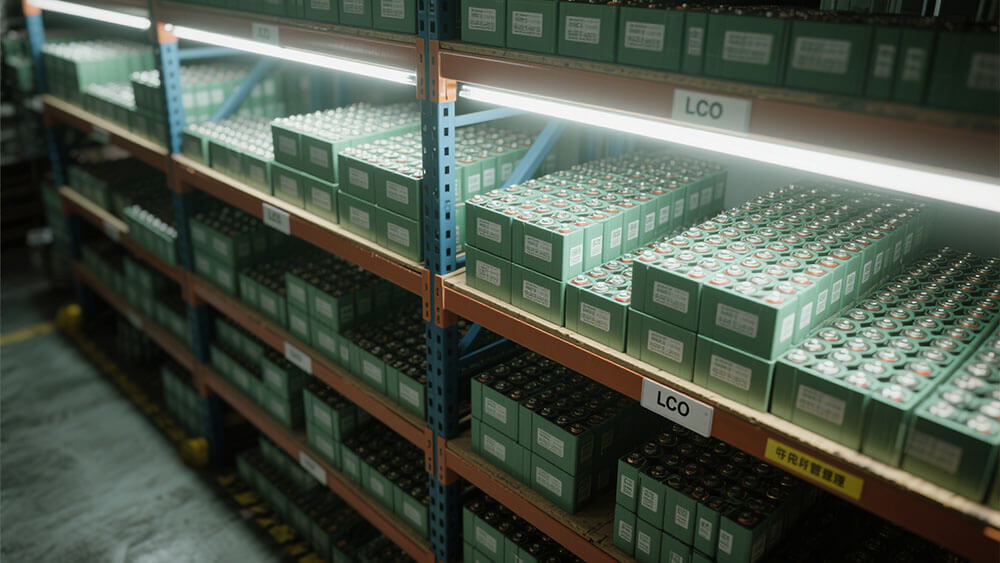Contents

LCO Lithium batteries have dominated consumer electronics for decades, but they are losing ground in today’s competitive market. Manufacturers increasingly prefer alternatives with higher energy density and longer lifespans.
Will LCO batteries be phased out? They have seen a sharp decline in market share.
This trend will continue as cobalt-free options gain traction.
These shifts pose critical challenges for industries like medical, robotics, and infrastructure, where battery reliability is essential.
Key Takeaways
LCO batteries are used less because they don’t last long. Try NMC or LiFePO4 batteries for better energy and lifespan.
LCO batteries can overheat, making them unsafe for important uses. Safer choices like LiFePO4 are more reliable.
Mining cobalt harms the environment, so cobalt-free batteries are better. Using eco-friendly options is good for people and the planet.

Part 1: Will LCO Batteries Be Phased Out Due to Technological Limitations?
1.1 Limited Energy Density and Lifespan
LCO Lithium batteries have long been a staple in consumer electronics, but their limited energy density and lifespan are significant drawbacks. These batteries offer a specific energy of 150–200Wh/kg, with some reaching up to 240Wh/kg. However, this pales in comparison to newer chemistries like NMC Lithium batteries, which achieve energy densities of up to 270Wh/kg.
The cycle life of LCO batteries further highlights their limitations. After just 100 cycles at a 1C charge rate, their capacity drops to 50%, and after 200 cycles, it plummets to 20%. In contrast, advanced chemistries like Lithium Titanate can endure up to 20,000 cycles without significant degradation.
These limitations make LCO batteries less suitable for applications requiring long-term reliability, such as medical devices, robotics, and infrastructure systems. If you’re considering battery technology for these industries, exploring alternatives like NMC or LiFePO4 Lithium batteries may be more beneficial.
1.2 Safety Concerns and Thermal Instability
Safety remains a critical concern for LCO batteries. Their susceptibility to thermal runaway at temperatures as low as 150°C (302°F) poses risks in high-demand applications. Overheating incidents are more frequent with LCO batteries compared to safer chemistries like LiFePO4 Lithium batteries, which are engineered to resist thermal runaway and overheating.
Battery Type | Safety Incidents | Thermal Stability |
|---|---|---|
LCO | More prone to overheating and thermal instability | Less stable compared to LiFePO4 |
LiFePO4 | Engineered for enhanced safety and stability | Resistant to overheating and virtually eliminates thermal runaway |
For industries like security systems and transportation infrastructure, where safety is paramount, the risks associated with LCO batteries outweigh their benefits. Transitioning to safer alternatives can mitigate these risks and enhance operational reliability.
1.3 High Dependence on Cobalt
The reliance on cobalt is another factor driving the decline of LCO batteries. Cobalt mining has significant environmental and ethical implications, including habitat destruction and human rights violations. Additionally, the rising cost of cobalt makes LCO batteries less economically viable compared to cobalt-free options like LiFePO4 Lithium batteries.
The battery industry is shifting toward chemistries that reduce or eliminate cobalt usage. NMC Lithium batteries, for instance, use less cobalt while offering superior performance. Solid-State Batteries, which are gaining traction, promise even greater energy density and safety without relying on cobalt.
If your business prioritizes sustainability and cost-efficiency, adopting cobalt-free battery solutions aligns with both environmental goals and economic pressures.

Part 2: Will LCO Batteries Be Replaced by Newer Chemistries?
2.1 Rise of NMC and NCA Batteries
The growing demand for high-performance batteries has accelerated the adoption of NMC and NCA chemistries. These alternatives outperform LCO batteries in energy density, lifespan, and cost-efficiency. NCA batteries, in particular, have become the preferred choice for electric vehicles (EVs) due to their high energy density and fast charging capabilities. This trend is evident in the EV market, where manufacturers prioritize technologies that enhance battery capacity while reducing cobalt dependency.
The lithium-ion battery market, which includes NMC and NCA batteries, is projected to exceed $430 billion by 2033. This growth reflects a significant shift toward high-nickel layered oxide materials, driven by the rising demand for EVs and renewable energy storage. With a market share of 55%, lithium-ion batteries are rapidly replacing LCO batteries in applications requiring superior performance and sustainability.
2.2 Advantages of LiFePO4 Batteries in Energy Storage Systems
LiFePO4 batteries offer distinct advantages over LCO batteries, particularly in energy storage systems. Their longer lifespan, lower risk of thermal runaway, and cost-effectiveness make them a reliable choice for industrial and infrastructure applications.
For energy storage systems, LiFePO4 batteries provide a higher cycle life of up to 5,000 cycles, compared to the 1,000-cycle limit of LCO batteries. This durability ensures long-term reliability, making them ideal for critical applications like medical devices and robotics.
Tip: If you’re exploring safer and more efficient battery solutions, consider LiFePO4 batteries for your energy storage needs from Large Power.
2.3 Market Shift Toward Solid-State Batteries
Solid-state batteries represent the future of energy storage. These batteries offer higher energy density, enhanced safety, and a longer shelf life compared to LCO batteries. By utilizing solid electrolytes, they eliminate the need for safety components, reducing both space and costs.
The demand for solid-state batteries is growing rapidly, particularly in the EV sector. Policy changes in major markets further accelerate this shift, as governments push for safer and more sustainable technologies. Their application in EVs and renewable energy storage highlights their potential to replace LCO batteries in high-demand scenarios.
The transition to solid-state batteries aligns with global sustainability goals. Learn more about sustainable battery solutions here.

Part 3: Environmental and Economic Pressures Driving the Phase-Out
3.1 Environmental Impact of Cobalt Mining
Cobalt mining, a critical component in producing LCO Lithium batteries, has raised significant environmental concerns. The extraction process often leads to deforestation, soil degradation, and water contamination, particularly in regions like the Democratic Republic of Congo (DRC), which supplies over 70% of the world’s cobalt.
A report reveals that toxic pollution from industrial cobalt mining in the Democratic Republic of Congo (DRC) is causing severe human and environmental impacts. It highlights that 56% of local residents report pollution affecting women’s gynecological and reproductive health, leading to issues such as irregular menstruation, urogenital infections, miscarriages, and birth defects.
For industries like medical, where sustainability and ethical sourcing are increasingly prioritized, the environmental impact of cobalt mining cannot be ignored. Transitioning to cobalt-free alternatives like LiFePO4 Lithium batteries offers a more sustainable solution while reducing the strain on ecosystems.
3.2 Rising Costs of Raw Materials
The rising costs of raw materials, particularly cobalt, have made LCO Lithium batteries less economically viable. Cobalt prices have surged due to increasing demand and limited supply, creating financial challenges for manufacturers. This cost escalation directly impacts industries like robotics, where cost-efficiency is critical for scaling operations.
Material | Price Trend (Last 5 Years) | Impact on LCO Batteries |
|---|---|---|
Cobalt | Increased by 80% | Higher production costs |
Nickel | Increased by 65% | Affects NMC alternatives |
Lithium | Increased by 120% | Impacts all lithium-ion chemistries |
Switching to alternatives like LiFePO4 Lithium batteries, which rely on more abundant and cost-effective materials, can help mitigate these economic pressures. These batteries also offer longer lifespans and enhanced safety, making them a practical choice for industries like infrastructure applications.
3.3 Regulatory Push for Sustainable Alternatives
Governments and regulatory bodies worldwide are implementing stricter policies to address environmental concerns and promote clean energy solutions. These regulations aim to reduce the carbon footprint of battery production and encourage the adoption of sustainable technologies. For example, the European Union’s Battery Directive mandates recycling rates of 50% for lithium-ion batteries by 2025, pushing manufacturers to innovate and adopt greener chemistries.
Industries like security systems and consumer electronics must adapt to these changes by investing in sustainable battery solutions. Solid-State Batteries, with their higher energy density and reduced reliance on harmful materials, align with these regulatory goals. By transitioning to such alternatives, businesses can not only comply with regulations but also enhance their brand reputation in a market increasingly driven by sustainability.
Tip: Explore how Large Power can help you meet regulatory requirements with custom battery solutions tailored to your needs.
LCO batteries face inevitable obsolescence as industries demand safer, more efficient, and sustainable solutions. Next-generation batteries, such as LiFePO4 and Solid-State Batteries, offer superior performance and align with global sustainability goals. Lithium costs in NCM622 and NCM811 chemistries have surged, further driving the shift toward alternatives. You must adapt by prioritizing recycling and investing in technologies that support electric vehicles and greater sustainability.
Note: Large Power provides custom battery solutions tailored to your industry needs.
FAQ
1. What industries are most affected by the decline of LCO Lithium batteries?
Industries like medical, robotics, and infrastructure face challenges due to LCO batteries’ limitations in lifespan and safety.
2. How do lithium-ion batteries compare to LCO batteries?
Lithium-ion batteries offer higher energy density, longer cycle life, and improved safety, making them a superior choice for industrial and consumer applications.
Can battery recycling help mitigate the environmental impact of LCO batteries?
Yes, battery recycling reduces waste and recovers valuable materials, supporting sustainability goals. Learn more about sustainable solutions at Large Power.





